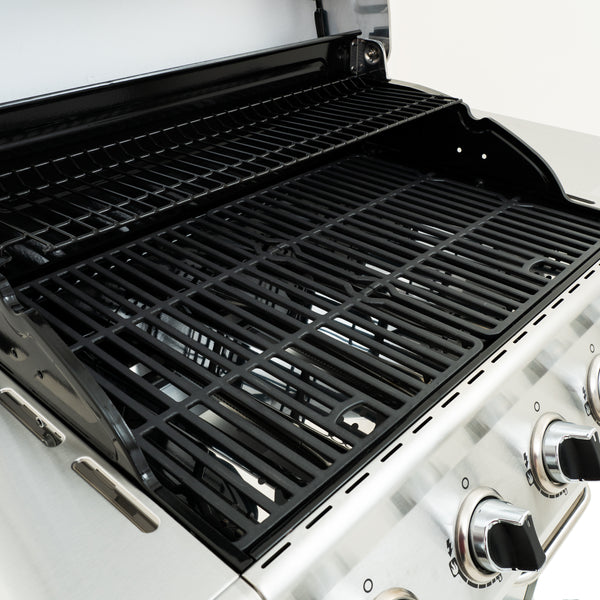Gas Grill Troubleshooting Guide: Gas Grill Temperature Gauge
What Is A Gas Grill Temperature Gauge?
The grill temperature gauge is an integral part of the grill's design that measures and displays the internal temperature of your grill.
The stem (also known as a probe) of your grill temperature gauge extends 1-2 inches into the cooking area. The temperature is averaged out over the length of this probe and reflected on the dial on your gas grill’s lid. It accurately shows you the temperature right above the food you’re cooking.
Faulty dial? Search for temperature gauge replacement parts here.
Why Your Gas Grill Is Not Getting Hot Enough
It may sound obvious, but your gas grill requires functioning burners to generate heat.
Fire up your grill to high heat and keep an eye on the burners beneath your grill’s cooking surface. If the burners’ flames increase in size as you rotate your grill’s temperature knobs, then great! Your burners are in working order and you may simply need a replacement grill temperature gauge, which you find here.
If you rotate the control knobs on your gas grill and the burners’ flames don’t increase in size, there are a few potential underlying causes:
- A faulty regulator
- A leak or blockage in the gas line
- A tripped backup safety shutoff device or propane tank filling valve
How To Troubleshoot Your Grill Not Getting Hot Enough
Before troubleshooting, make sure that the gas tank is full and the propane tank has a good seal. Check for any obstructions in the gas line and inspect all connections for leaks or wear and tear.

How To Reset Your Gas Grill Regulator
First, let’s check your regulator.
Turn off the burners on your gas grill.
Turn off the propane tank and disconnect the hose from the tank.
Open your grill lid, turn your grill’s burner knobs to full for a couple of minutes, and then turn them off again.
Reconnect your propane tank to your gas grill, turn it on, and then slowly turn on the gas.
How To Check For Leaks In The Gas Line
- Inspect all connections for leaks or wear and tear

- Turn your grill’s gas controls off.
- Then, mix a 50/50 solution of liquid dishwashing soap and water in a spray bottle.
- Turn your propane tank’s valve on to pressurize the line. Don’t ignite the grill.

- Use a brush or spray bottle to apply the soapy mixture to the gas valve, hose, and regulator. Coat the entire gas line. If you have a side burner, apply the soapy mixture to those connections too.
- Slowly turn the gas back on.

- If you see bubbles appearing, there is a gas leak where the bubble is forming. You must fix this before using your grill again.
How To Recognize When Your Grill Temperature Gauge Is No Longer Working
- Is there condensation inside the temperature gauge?
If yes, remove the grill temperature gauge and let it dry out.
If there is no condensation, it’s time to replace your grill temperature gauge.
- Is the temperature gauge loose?
If yes, check the locking nut. If the locking nut is loose, tighten it.
If your grill temperature gauge is still loose after tightening the locking nut, you will have to replace the temperature gauge.
How To Remove Your Grill’s Temperature Gauge
Before you can replace your grill temperature gauge, you will need to remove the old, broken temperature gauge.
To remove it, open your grill’s lid, place a little pressure on the temperature gauge dial face, and unscrew the wingnut.
How To Replace Your Gas Grill’s Temperature Gauge
Close your grill’s lid and slip your replacement grill temperature gauge into place. Ensure it is straight up and down.
Open the lid, place slight pressure on the dial face and tighten the wingnut on the back.
Need grill parts replacement? Search for temperature gauge replacement parts here.


